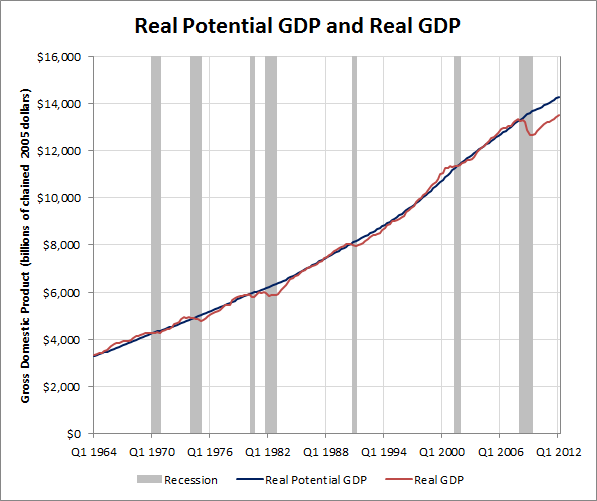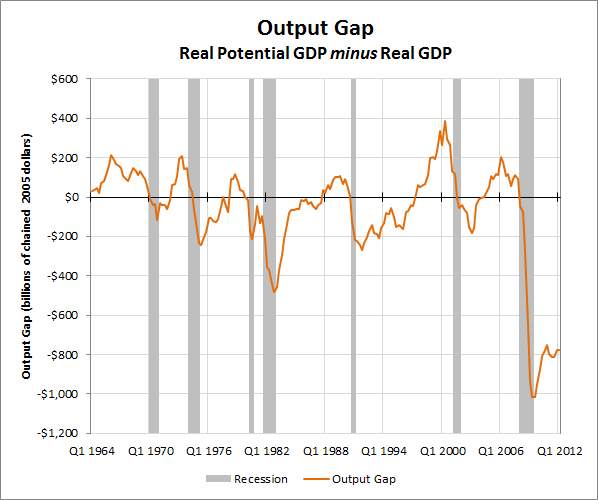During the Great Recession, which spanned nineteen months (December 2007 to June 2009), the U.S. economy contracted by 5.1%. This was the most that the economy has shrunk since the Great Depression of the 1930s.
The unusually steep draw down of the U.S. economy is not the only uncommon part of the past five years. The recovery from the recession has also been atypical, because the size of the economy did not return to peak 2007 levels until the end of last year in real (inflation adjusted) terms.
Although the economy has grown by 6.7%, since the end of the Great Recession, it is still operating well below its potential. Today, real potential gross domestic product (GDP) stands well above real actual GDP. GDP measures the size of the U.S. economy and is the market value of all final goods and services produced within the country in a years time. Real potential GDP is an estimate of what the output of the U.S. economy would be over a year with a high rate of use of both capital and labor and is adjusted to remove the impact of inflation. Real potential GDP is the level at which the U.S. economy could remain stable over the long run.
The gap between real potential GDP (blue line above) and real GDP (red line above) is referred to as the output gap (orange line below). The second chart illustrates that the output gap was extremely negative in the first half of 2009. While it can be argued whether or not the problem is a supply or demand issue, the fact remains that, although the gap has closed over the past three years, the U.S. economy is still running well below its potential.

